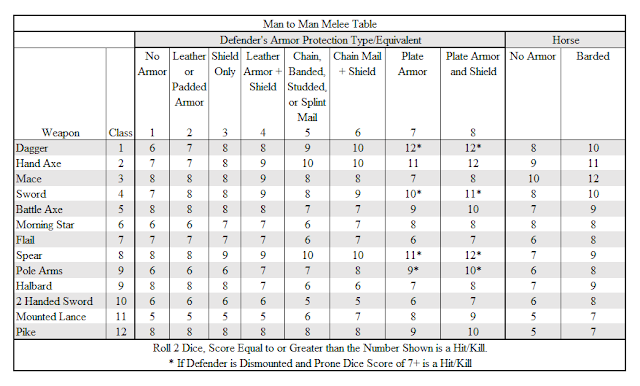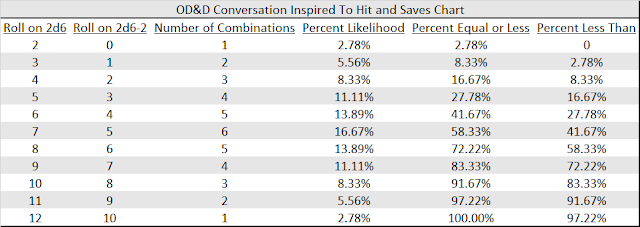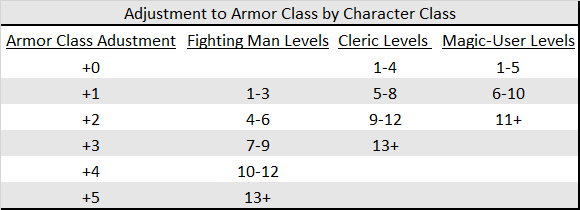Rethinking Dungeons & Dragons: An Alternate "Original D&D" Combat System
Jumping Right in with Some Gaming Goodness
I've been on a bit of a Dungeons & Dragons history and prehistory kick of late. This most recent round of inquiry began with me reading Slaying the Dragon: The Secret History of Dungeons and Dragons by Ben Riggs. This recently published work dives into the collapse of the company that created D&D and the various bad choices that led to that collapse.
After reading the book, I looked on my bookshelf to see what I should read next and I was drawn to a lot of work from the dawn of the role playing game hobby, and a little bit before. I flipped through a couple of issues of the ancient British Miniature Soldier Society's Bulletin which published Tony Bath’s influential rules for Ancients wargaming and old issues of the Society of Ancients Slingshot Magazine. I was reading them from the perspective of how those publications relate to the early development of D&D, especially with regards to how these British wargaming resources helped to inform Gary Gygax’s Chainmail rules set. My journey down this rabbit hole continued and I eventually stumbled upon a very interesting conversation over on the OD&D discussion boards regarding the combat system for David Arneson's Blackmoor Campaign.
As most of you know, Dungeons & Dragons is over 40 years old and though the game has changed a lot over the decades one thing has remained the same. In every edition since the Little Brown Books first introduced the "Alternate Combat System" the basic mechanic of the game has been for players to roll a Twenty-sided die to determine success or failure when attacking in combat. That term "Alternate Combat System" has always intrigued me. While the original Little Brown Books recommend using Chainmail as the combat system for D&D play, it isn't evident that this was the system that either Arneson or Gygax were actually using in their pre-publication D&D games. Writers like Jason Vey, Jason Cone, and Daniel Boggs (as Alderron) have all examined how to run D&D using the Chainmail system. Jason Vey's Spellcraft & Swordplay Core Rulebook and Daniel Boggs' Champions of ZED: Zero Edition Dungeoneering have gone even further an attempted to create and play games that are similar in style to the game David Arneson may have played in the pre-publication days of D&D.
The conversation on the OD&D discussion boards was started by Daniel Boggs who was inquiring what David Arneson's post-Chainmail game sessions might look like. According to Boggs' post, Arneson's crew may have played using rules adapted from an Ironclads rule set Arneson had designed for American Civil War ship to ship combat. I initially confused Arneson's Ironclad rules with Tom Wham's Ironclad rules and some large sum of cash spent at Noble Knight Games later, I discovered that these were not the rules Boggs was referencing.
The discussion board conversation inspired me to play around with a "pre-D&D-esque" combat rules set of my own based on a system of rolling 2d6-2 for the combat rolls. If you read the Boggs' led conversation, you'll see that 1-10 rolls (or 0-10 rolls) might have been used by Arneson's team and I like the distribution provided by rolling 2d6.
My goal here is to open a conversation and get feedback before playtesting. I'm in the process of adapting the Chainmail rules outright, but this would be another alternative system.
The original Chainmail man-to-man combat system, as Boggs/Vey and others have pointed out Chainmail has at least 3 combat subsystems, uses a comparison of a person's weapon and an opponent's armor to determine the to hit roll. For example (looking at the table below), a person with a dagger would need to roll a 12 on 2d6 to hit a person wearing Plate Armor and Shield. Any blow struck kills the target, or deals 1d6 damage in D&D's adaptation of the rules.
This is a very workable system that has a lot of granularity and is one that I'm looking forward to playing with my regular game group, but it is also one that is more "fiddly" and combat table based than many modern gamers are used to in their games. If you look at the table above, you'll see that Chainmail used an ascending Armor Class much like the modern game. This was reversed in original D&D and Armor Class was rescaled so that lower Armor Classes were better and Plate Armor and Shield was given an AC of 2, while No Armor was given an AC of 10.
In the post-D&D 3.0 d20 system, many have come to prefer ascending ACs as being more intuitive for players, but in the system I'm about to propose I'm going to recommend keeping the reversed ACs of the Original Little Brown Books and other early editions of D&D.
What is my “new” alternative system? It's fairly simple and is essentially what was discussed in the OD&D boards. I want to experiment with rolling 2d6-2 where the characters hit if they roll less than the AC of the defender. You can see a breakdown of the probability of success below. I've selected "less than" rather than "equal to or less than" because I want to have some potential for automatic failure.
You'll notice that this system makes it very difficult to hit opponents with a good armor class. A player would only have an 8.33% chance of hitting an opponent with an AC of 2 (Plate Mail) and only a 2.78% chance of hitting an opponent with an AC of 1 (Plate Mail and Shield). This won't be too big a deal if GMs ensure that such armors are expensive and doesn't give too many creatures an Armor Class that low. Such a strong defense should be limited to Dragons and the like.
Now that I've established the base to-hit numbers, I've got two D&D related questions to answer.
How does level advancement affect to hit rolls for both monsters and character?
How much damage is done on a hit?
Keeping the basic classes of the first three Little Brown Books (Fighting Men, Clerics, and Magic Users), I think that these classes improve in their ability to bypass armor as they increase in levels by having the ability to modify the Armor Class they are rolling against. In essence, higher level characters are more able to see and exploit the weaknesses in armor and thus can treat Armor Classes as a higher Armor Class as they gain levels. I would propose an advancement that looks like the one below. Fighting Men begin play with a slightly better chance to hit opponents than other classes and start with a bonus where other classes have to wait and have a lower total bonus at higher levels. Keep in mind that the Armor Class Adjustment is added to the Opponent's Armor Class and not to the die roll. Thus a 13th Level Fighting Man would attack Plate Mail and Shield (AC 1) as if it was Leather and Shield (AC 6) and would hit that 58% of the time. This may seem pretty radical, but keep in mind this is a very high level Fighting Man and that it is only a single hit.
The second question is what to do about damage. In Chainmail a single hit equals death, but "Heroes" and "Superheroes" are able to take multiple hits before dying. This is reflected in the Little Brown Books in two ways. The first is the "Hit Points" with which gamers are well familiar. The second is by counting characters as multiple "Men" as they progress. A high level Fighting Man might eventually fight with the ability of "8 Men" at the "Superhero" rank. Essentially, the ability to fight as multiple people is reflected in the Hit Points of the characters as they have a number of d6 Hit Dice that are essentially equal to the number of "Men" the character can fight as. Given that all weapons in the Little Brown Books do 1d6 damage, each successful attack does enough damage to kill a level 1 character (1 Hit Die of 1d6 vs. 1 attack of 1d6 damage), it doesn't really matter whether you want each attack to do 1 "Man" of Damage or 1d6 of damage. It's only when you add the rules for Magic, and this is D&D after all, that it becomes evident that the damage should be 1d6 per hit.
But how many "attacks" does a character get? Looking at the Fighting Capability, you can see the references to a number of "Men" for each class. That's what I would use to determine the number of attacks. Yes, this means that I'd have a high level fighter making 8 attacks against opponents. You might think that this affects game balance, except when you compare it to the damage that high level Magic Users are capable of dishing out I think it's more than warranted.
These are some preliminary thoughts on a Alternative to the "Alternative Combat System" that captures a bit of the miniature inspired play while being a bit more freeform than a strict adherence to Chainmail.
What are your thoughts?








